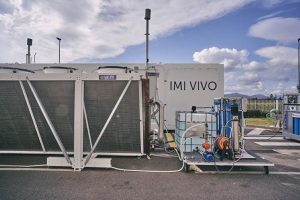The projects will use hydrogen production and underground cavern storage to provide grid-friendly loads that stabilize the power system by absorbing mismatches between electricity supply and hydrogen consumption. This operating mode, referred to as ‘predispatch’, is intended to address discrepancies that arise before grid congestion occurs.
The approach is based on the ‘Netzbrücke’, or ‘grid bridge’, which aims to reduce reliance on redispatch measures used to prevent bottlenecks. Redispatch involves lowering generation ahead of congestion points and raising it behind them. According to the release, negative redispatch results in annual costs of €2–3 billion in Germany. Predispatch, described as a form of complementary hybrid redispatch, is intended to reduce these costs while enabling productive use of surplus renewable energy.
For the Rüstringen-based Netzbrücke 410 project, ITM Power will supply a 30 MW green hydrogen production plant using its NEPTUNE V containerized electrolyzer units, along with associated integration works. Stablegrid has reserved ITM’s production capacity ahead of an expected final investment decision (FID) in 2026.
A second project will deploy 680 MW of indoor electrolyzer capacity. Stablegrid and ITM Power plan to begin pre-front-end engineering design work in January 2026, with the FID anticipated in 2028.
Oliver Feller, Member of the Management Board of Stablegrid Group, said: “With ITM Power, we have a strong and experienced partner at our side who brings the technical expertise and excellence required to implement system-stabilising hydrogen projects of this magnitude reliably.”






